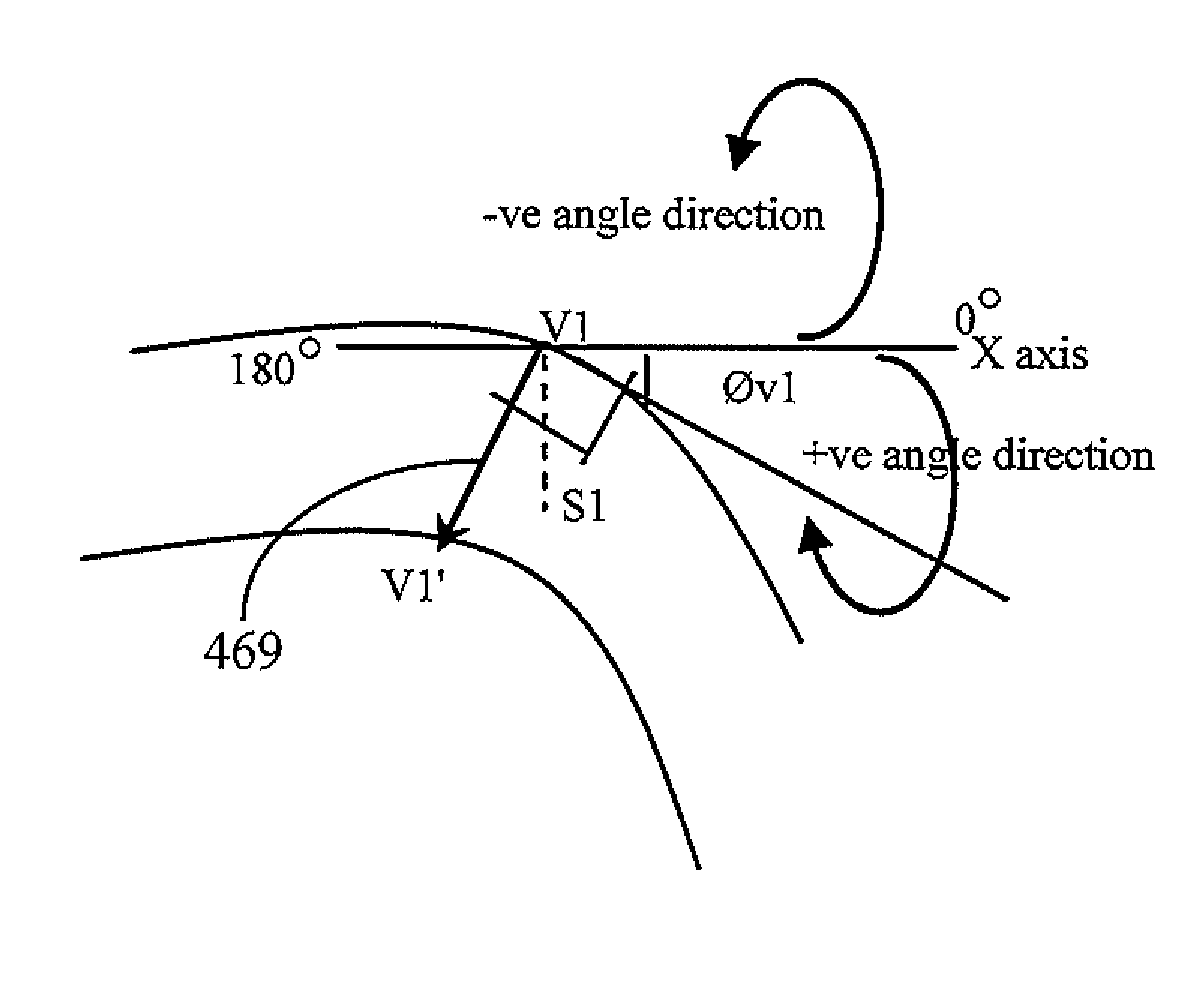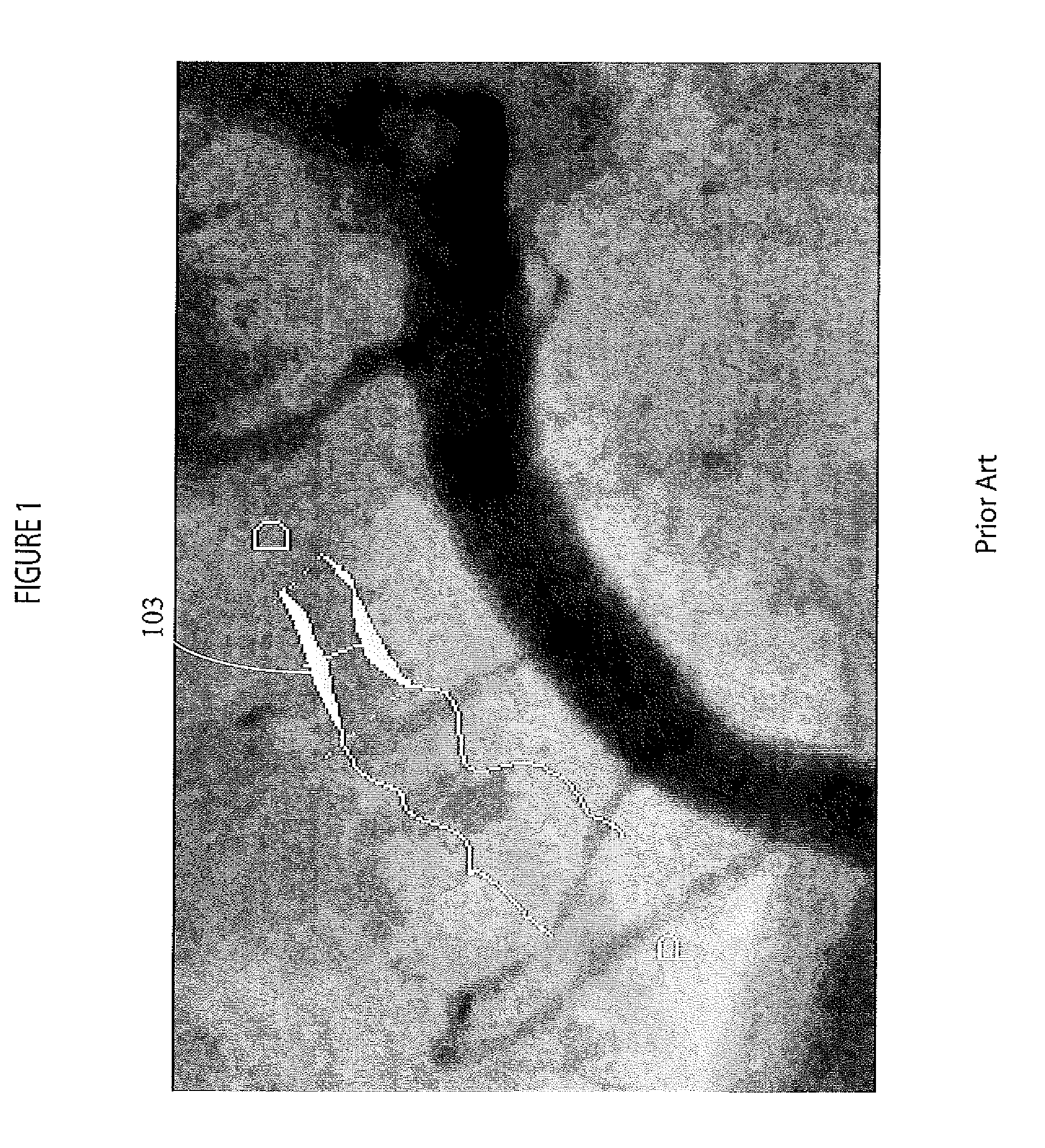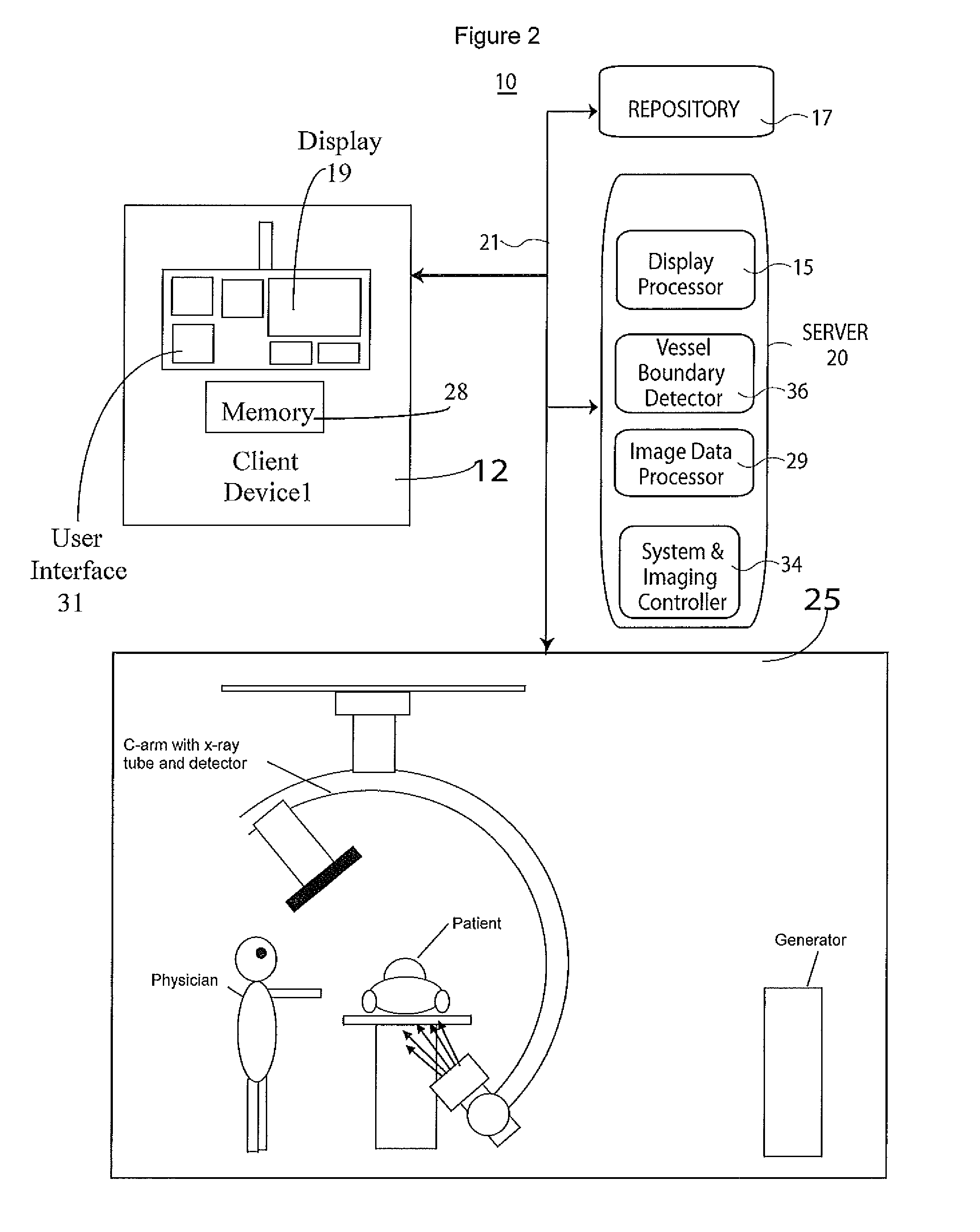Automated system for anatomical vessel characteristic determination
a technology of anatomical blood vessels and display systems, applied in the field of anatomical blood vessel detection and display systems, can solve the problems of time-consuming and easy to error detection, system for blood vessel detection, and erroneous detection of vessel boundaries, and achieve the effect of inhibiting erroneous detection of boundaries
- Summary
- Abstract
- Description
- Claims
- Application Information
AI Technical Summary
Benefits of technology
Problems solved by technology
Method used
Image
Examples
Embodiment Construction
[0024]A system enables a user to mark a ROI of a vessel portion having detected boundaries and extend the automatic detection of vessel boundaries into a region identified by the user. The system automatically determines a minimum vessel diameter in the extended marked region of interest between the detected boundaries and initiates identification of the location of the minimum vessel diameter in the image.
[0025]FIG. 2 shows anatomical blood vessel detection and display system 10. System 10 includes one or more processing devices (e.g., workstations or portable devices such as notebooks, computers, Personal Digital Assistants, phones) 12 that individually include a user interface control device 31 such as a keyboard, mouse, touchscreen, voice data entry and interpretation device and memory 28. System 10 also includes at least one repository 17, X-ray imaging modality system 25 (which in an alternative embodiment may comprise an MR (magnetic resonance), CT scan, or Ultra-sound system...
PUM
 Login to View More
Login to View More Abstract
Description
Claims
Application Information
 Login to View More
Login to View More - R&D
- Intellectual Property
- Life Sciences
- Materials
- Tech Scout
- Unparalleled Data Quality
- Higher Quality Content
- 60% Fewer Hallucinations
Browse by: Latest US Patents, China's latest patents, Technical Efficacy Thesaurus, Application Domain, Technology Topic, Popular Technical Reports.
© 2025 PatSnap. All rights reserved.Legal|Privacy policy|Modern Slavery Act Transparency Statement|Sitemap|About US| Contact US: help@patsnap.com



